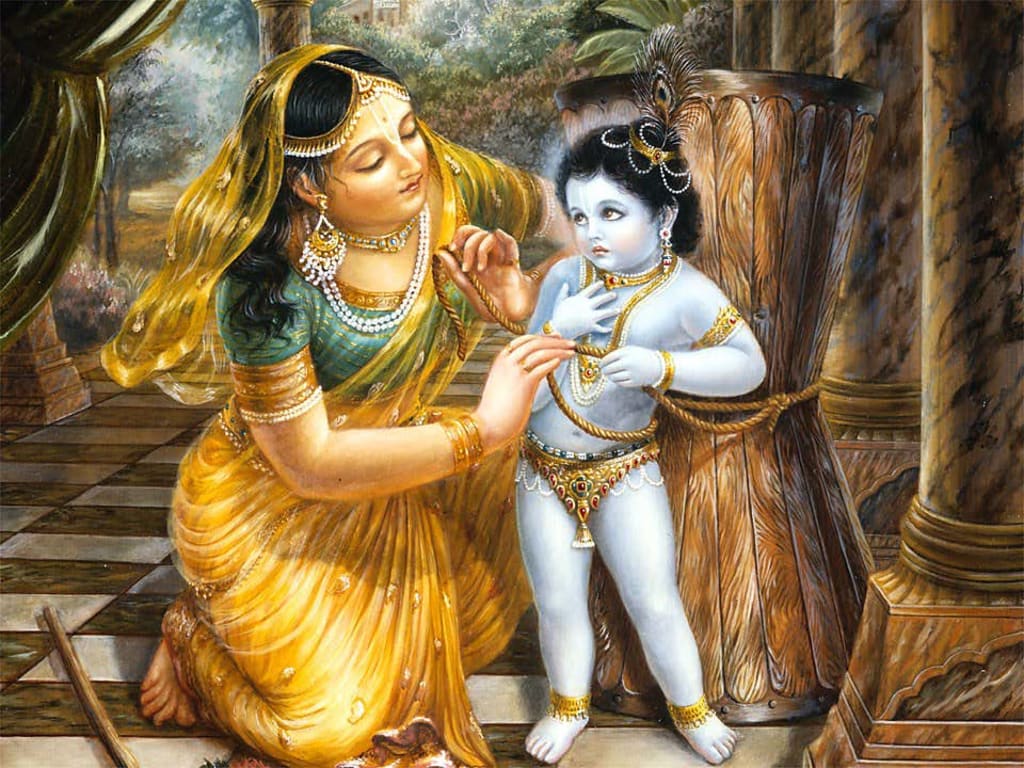
Mahabharata ”is a unique, religious, mythological, historical and philosophical treatise of India. It is one of the most important texts of Hinduism. It is the longest literary treatise in the world, although it is considered to be one of the most unique works of literature, even today it is an exemplary source for every Indian.
According to Hindu beliefs, mythological references and the Mahabharata itself, the author of this poem is considered to be Vedavyas Ji, and the credit for writing it goes to Lord Ganesha, it was written in the Sanskrit language. The author of this poem, Vedavyas Ji, in his unique poetry, has described the deepest secrets of Vedas, Vedangas and Upanishads. Apart from this, justice, education, medicine, astrology, war strategy, yoga, economics, architecture, craftsmanship, Kamashastra, astronomy and theology are also described in detail in this poem.
The vastness and philosophical mysticism of Mahabharata is not only a compilation of Indian values but also the essence of Hinduism and Vedic tradition. The vastness, greatness and completeness of the Mahabharata can be inferred from a verse mentioned in its first episode, which means,
This work is a saga of the history of ancient India. This is embodied in the Bhagavad Gita, the holiest scripture of Hinduism. There are about 110,000 verses in the entire Mahabharata, which is ten times more in volume than the Greek poems Iliad and Odyssey.
Scholars have different opinions about the Mahabharata period, yet most scholars associate the Mahabharata period with the 'Iron Age'. It is estimated that the 'Kuru dynasty' described in the Mahabharata may have been in power from 1200 to 800 BC. If you look at the mythological belief, it is known that the period of Arjuna's grandson Parikshit and Mahapadmananda is 382 BC.
This epic is famous by these three names 'Jai', 'Bharat' and 'Mahabharat'. In fact, Ved Vyas ji was the first to compose a treatise called 'Bharat' of 100,000 verses, in which he described the characters of Bharatavanshis as well as many other great sages, anecdotes of Chandravanshi-Suryavanshi kings and many others. Also, add religious anecdotes. After this Vyas ji composed 'Bharat' poetry of 24,000 verses without any other sages, Chandravanshi-Suryavanshi kings' anecdotes focusing only on Bharatvanshis. Due to the victory over the iniquity of religion in these two compositions, they were also called 'Jai'. There is a legend in the Mahabharata that when the gods placed the four "Vedas" on one side of the scales and the 'Bharat Granth' on the other, the 'Bharat Granth' proved to be the heaviest of all the Vedas. Therefore, seeing the importance (greatness) of the scripture 'Bharat', the gods and sages named it 'Mahabharat' and because of this story, this poem also became most famous among human beings by the name of 'Mahabharat'.
Epic writing
It is mentioned in 'Mahabharata' that Vedavyasa engaged in penance in a sacred cave in the foothills of the Himalayas and meditated on the events of Mahabharata from beginning to end and composed Mahabharata in his mind. , But after this, a serious problem arose before them, how to convey the knowledge of this epic to the common people, because of its complexity and length, it was a very difficult task for anyone to write it without any error, As they speak. So at the request of Brahma, Vyas approached Lord Ganesha. Ganesha agreed to write, but he made it a condition that once he picked up the pen, he would not stop until the poem was over. Vyasji knew that this condition could cause a lot of difficulties.
Therefore, he also made a condition with his cleverness that before writing any verse, Ganesha must understand its meaning. Ganesh accepted the offer. In this way, Vyas would compose some difficult verses in between. While Ganesha was contemplating his meaning, Vyasaji would compose some new verses at that time. Thus the entire Mahabharata was written at intervals of three years.
Vedavyasa was the first to make the first Bharat Granth of one lakh verses, including anecdotes of meritorious human beings. Subsequently, except for the anecdotes, he made 'Bharat Samhita' of twenty- four thousand verses. After that Vyasji made the second code of sixty lakh verses, of which thirty lakh verses were included in Devalok, fifteen lakh verses in Pitrulok and fourteen lakh verses in Gandharvalok. The first India of one lakh verses became famous in the human world. After completing the composition of Mahabharata Granth, Vedavyas first made his son Shukadev study this Granth.
Feasts of Mahabharata
The original design of the Mahabharata has a specific sum of the number eighteen. The duration of the war between the Kauravas and the Pandavas was eighteen days. The combined strength of the armies of both sides was also eighteen Akshauhini. The chief masterminds of this war were also eighteen. In the Prabhanda Yojana of Mahabharata, the entire text has been divided into eighteen festivals and there are also eighteen chapters in the 'Shrimadbhagavadgita' described under 'Bhishma Parva' in Mahabharata.
The entire Mahabharata is divided into eighteen festivals. The meaning of 'festival' is - "knot or joint". This naming of the division of the Mahabharata is realistic as it connects the previous story with the later story. These festivals are named after important characters or events in the plot. There are many other festivals in the main festivals. These festivals are redistributed into chapters. Festivals and chapters are uneven in size. Many festivals are very big and many festivals are very small. The number of verses in the chapters is also irregular. In some chapters, there are less than fifty verses and in some, the number is more than two hundred. The names of the main eighteen festivals are as follows-
Mahabharata Story
The story begins with King Shantanu of the Kuru dynasty of Hastinapur marrying the river Goddess Ganga.
Their son, Bhishma, was a major character in the Mahabharata.
Shantanu married Satyavati and had two sons with her after Ganga left them to carry out her divine tasks.
One of his sons, Vichitravirya, succeeded him as king.
Dhritarashtra, Pandu, and Vidur were his three sons.
Because Dhritarashtra was blind, Pandu became king with the help of Bhishma.
Dhritarashtra married Gandhari and had the Kauravas, a hundred sons.
Pandu married Kunti and Madri, and the five Pandavas were born with the blessings of many gods.
Kunti was already an unwed mother to her oldest son, Karna, who was unknown to everyone.
Pandu decided to retire to the forest after bringing prosperity to his country, giving the kingdom Dhritarashtra's care.
Kunti returned to Hastinapur with the five boys after Pandu and Madri died.
Kauravas and Pandavas, cousins, never got along.
The Kauravas attempted to kill them but were unsuccessful.
The Pandavas and their mother went into hiding following one such scheme.
Arjun married Draupadi during this time, and they all returned to Hastinapur. They were exiled to the wilderness for thirteen years when Yudhishthir lost everything to the Kauravas in a game of dice.
Despite Lord Krishna's efforts to restore peace, Duryodhana refused to return to the kingdom, and the stage was prepared for the biggest conflict ever.
The war lasted eighteen days and ended with the Kauravas' defeat.
King Yudhishthir was crowned.






Comments
There are no comments for this story
Be the first to respond and start the conversation.